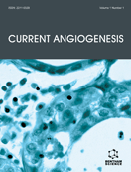Abstract
Pathogenic bacteria are recognized by cells expressing Toll-like receptors (TLRs). This interaction initiates an innate immune response that increases host resistance to infection and accelerates wound healing. This work examines whether antibiotics that eliminate bacteria have a detrimental effect on the rate of wound repair. Results indicate that antibiotic treatment i) eliminates bacteria from the skin, ii) reduces wound inflammation (as manifest by decreased expression of IL-1β, CCL2, IFNα and IFNβ mRNA) and thereby iii) delays wound healing. This adverse consequence is corrected by co-administering the TLR9 ligand CpG ODN and/or the TLR7 ligand imiquimod.
Keywords: CpG oligonucleotide, imiquimod, PAMP, TLR, wound healing
 22
22

